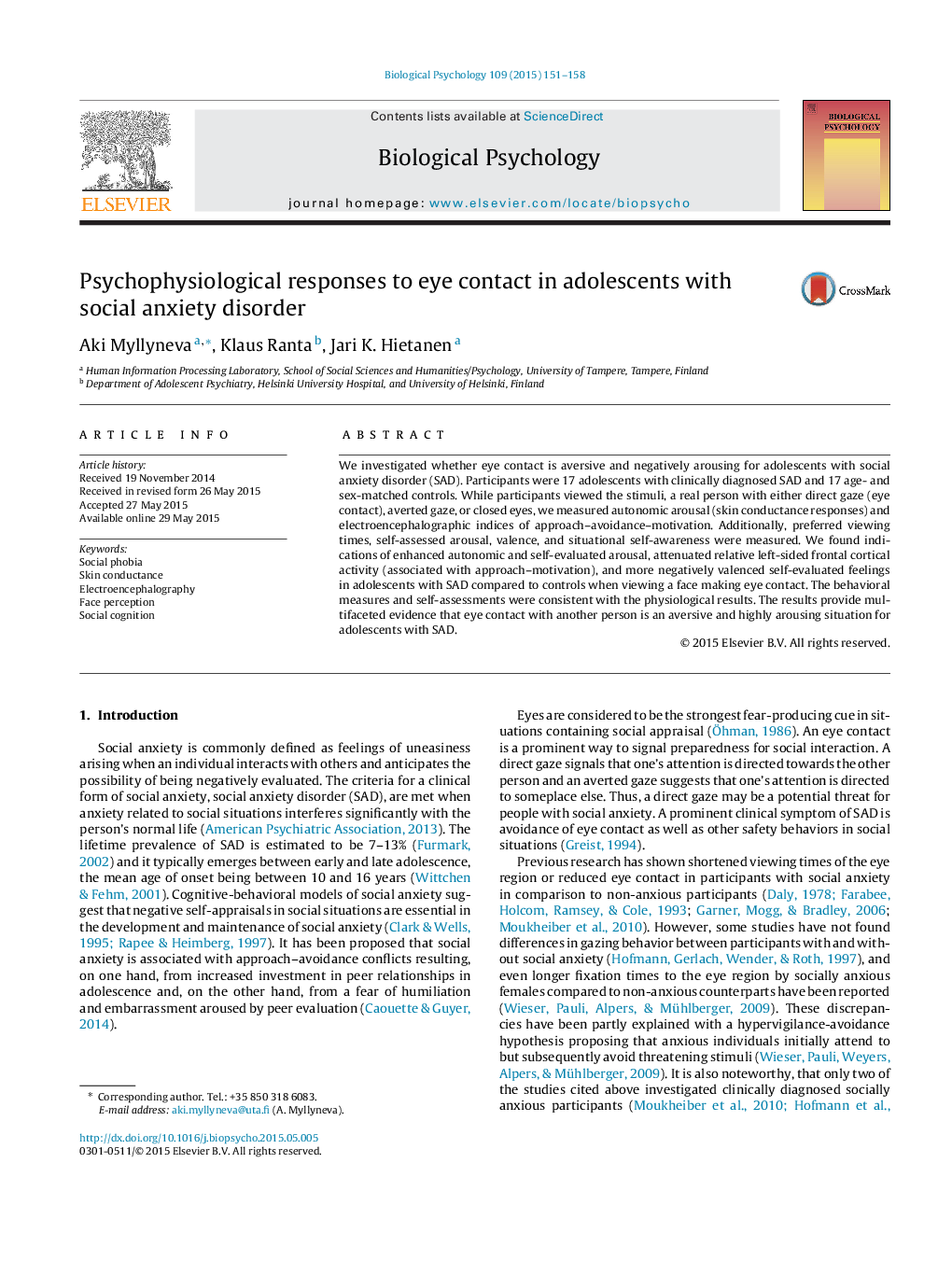| Article ID | Journal | Published Year | Pages | File Type |
|---|---|---|---|---|
| 920826 | Biological Psychology | 2015 | 8 Pages |
•Psychophysiological responses to eye contact with a real person were measured.•Participants were adolescents with social anxiety disorder (SAD) and healthy controls.•Responses to eye contact were enhanced in adolescents with social anxiety.•Behavioral and self-assessed measures were consistent with physiological results.•Eye contact with another person is aversive and arousing to adolescents with SAD.
We investigated whether eye contact is aversive and negatively arousing for adolescents with social anxiety disorder (SAD). Participants were 17 adolescents with clinically diagnosed SAD and 17 age- and sex-matched controls. While participants viewed the stimuli, a real person with either direct gaze (eye contact), averted gaze, or closed eyes, we measured autonomic arousal (skin conductance responses) and electroencephalographic indices of approach–avoidance–motivation. Additionally, preferred viewing times, self-assessed arousal, valence, and situational self-awareness were measured. We found indications of enhanced autonomic and self-evaluated arousal, attenuated relative left-sided frontal cortical activity (associated with approach–motivation), and more negatively valenced self-evaluated feelings in adolescents with SAD compared to controls when viewing a face making eye contact. The behavioral measures and self-assessments were consistent with the physiological results. The results provide multifaceted evidence that eye contact with another person is an aversive and highly arousing situation for adolescents with SAD.
